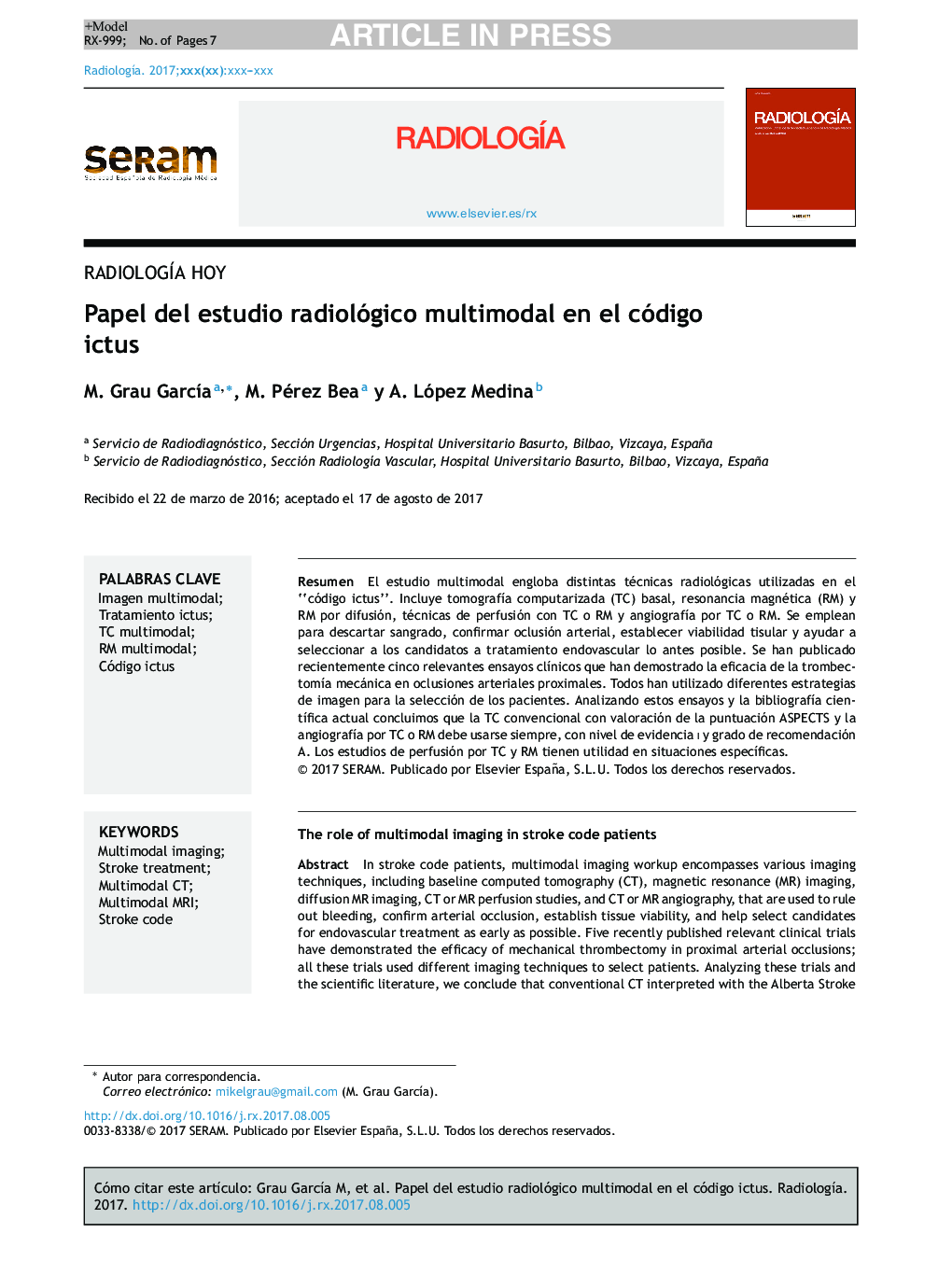| Article ID | Journal | Published Year | Pages | File Type |
|---|---|---|---|---|
| 8824725 | Radiología | 2018 | 7 Pages |
Abstract
In stroke code patients, multimodal imaging workup encompasses various imaging techniques, including baseline computed tomography (CT), magnetic resonance (MR) imaging, diffusion MR imaging, CT or MR perfusion studies, and CT or MR angiography, that are used to rule out bleeding, confirm arterial occlusion, establish tissue viability, and help select candidates for endovascular treatment as early as possible. Five recently published relevant clinical trials have demonstrated the efficacy of mechanical thrombectomy in proximal arterial occlusions; all these trials used different imaging techniques to select patients. Analyzing these trials and the scientific literature, we conclude that conventional CT interpreted with the Alberta Stroke Programme Computed Tomography Score (ASPECTS) and CT or MR angiography should always be used (level of evidence I, grade of recommendation A) and that CT and MR perfusion studies are useful in specific circumstances.
Keywords
Related Topics
Health Sciences
Medicine and Dentistry
Radiology and Imaging
Authors
M. Grau GarcÃa, M. Pérez Bea, A. López Medina,
